
Hinterbrühl volunteer fire brigade tests the Unimog
Vehicle & Technology
Sector fire inspector Franz Sittner and chief fire officer Wolfgang Skraback from Hinterbrühl voluntary fire brigade put the Unimog U 5023 through a tough test. Will the offroad professional become their new emergency vehicle?
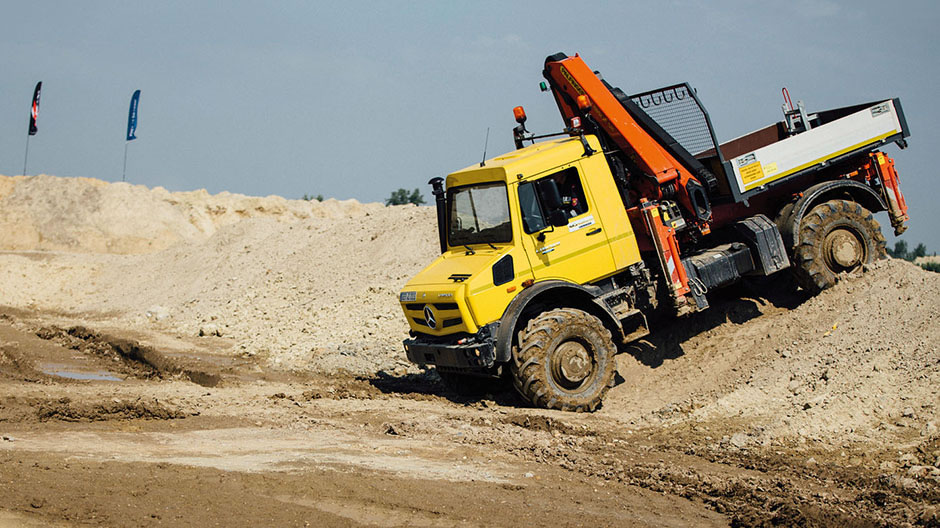
At the Liebherr RoadShow in Markgrafneusiedl, experts from Hinterbrühl voluntary fire brigade test out the Unimog U 5023 – and it masters many a tricky situation.
It's a well-known fact, but we should draw attention to it occasionally: generally, people who serve in one of Austria's many local fire brigades are volunteers. In return for sweat, commitment, hard work and time, they might be given a thank you. Or in rural areas a snack or a round of beer. But there is no money for the members of the voluntary fire brigades. The firefighters even have the job of collecting money or organising events to raise money for the fire service, to pay for purchasing new hoses, pumps or tools. Now and again, donations are even used to help fund new fire engines and vehicles. But the voluntary fire brigade in Hinterbrühl in Lower Austria is not at that stage yet – they won't be buying one for a few years.
Their first aim is to get a picture of a potential new emergency vehicle. That is why sector fire inspector Franz Sittner and chief fire officer Wolfgang Skraback have come to Markgrafneusiedl in the east of Vienna today to visit the Liebherr RoadShow, in order to test the new extreme off-road Unimog U 5023 in practice. And the test gets tough right away: Skraback steers the vehicle up a 40-degree slope on the edge of a gravel quarry. Ever so slowly, he revs the engine, then he only presses the accelerator lightly and lets the Unimog do the climbing. The 170 kW strong workhorse that weighs 11.6 tonnes with its crane body seems to have no difficulty here. On the contrary: one has the impression that a few more degrees of gradient and a few more kilogrammes of load would be no problem.
That is presumably due to the new Euro VI engine generation of the U 5023, which boasts outstanding emission values and excellent fuel efficiency. The result is: even at low engine speeds, it has high output at its disposal. Also, the engine has been positioned about a metre further to the rear. This new mid-engine concept helped not only to accommodate all the additional components required for Euro VI, but also to make a direct power take-off available from the engine for the body space behind the driver's cab. This means that appliances can be powered independent of driving. Firefighting vehicles are therefore in a position to drive and put out fires at the same time: it's called "pump & drive".
This means the vehicle can be used even more flexibly, and that's exactly what fire brigades like so much about the Unimog in general, and the new U 5023 in particular. "We could deal with an incredibly wide range of probable operations," says Franz Sittner. "Because of its huge offroad capabilities alone." Thanks to portal axles, a low centre of gravity, a tight turning circle, axle articulation of up to 30 degrees and extremely favourable values for the angles of approach and departure, missions in extreme traffic conditions and off roads are possible.
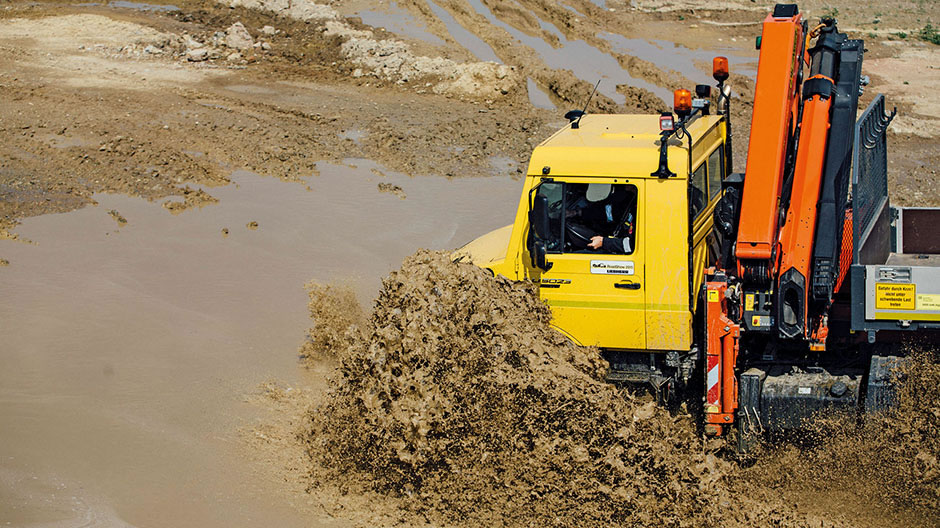
With a fording depth of 1.20 metres, if it comes to the crunch the Unimog can be used in flood areas.
Even obstacles such as water holes or small floods are no problem – the Unimog is able to ford depths up to 1.20 metres. With tirecontrol plus, the new tyre pressure control system, the preconfigured, best tyre pressure for each use can be set easily on the display.
"It leaves virtually nothing to be desired," says Wolfgang Skraback, who is now driving the Unimog towards a 20 to 30 metre long water hole. With instruction from a professional coach, he steers the vehicle vigorously into the obstacle, and the water splashes up high to the right and left – but that does not put the Unimog off its stride. Even the deep, often muddy ruts cannot slow it down. "These are the sort of conditions we often experience when there's a disaster like a flood," says Franz Sittner.
Next, a Unimog U 530 implement carrier starts driving through the water hole – it too is ideal for all firefighting operations. "This shows very well what a wide, flexible service we can provide for fire brigades," says Andreas Hosinger, who is responsible for selling Unimog and emergency vehicles for Pappas in Wiener Neudorf. The available performance spectrum is also based on experience that was gathered in recent decades – Hosinger says that since 1959 Austrian fire services have bought about 200 Unimog vehicles. "That on its own shows how highly they are valued in this sector."
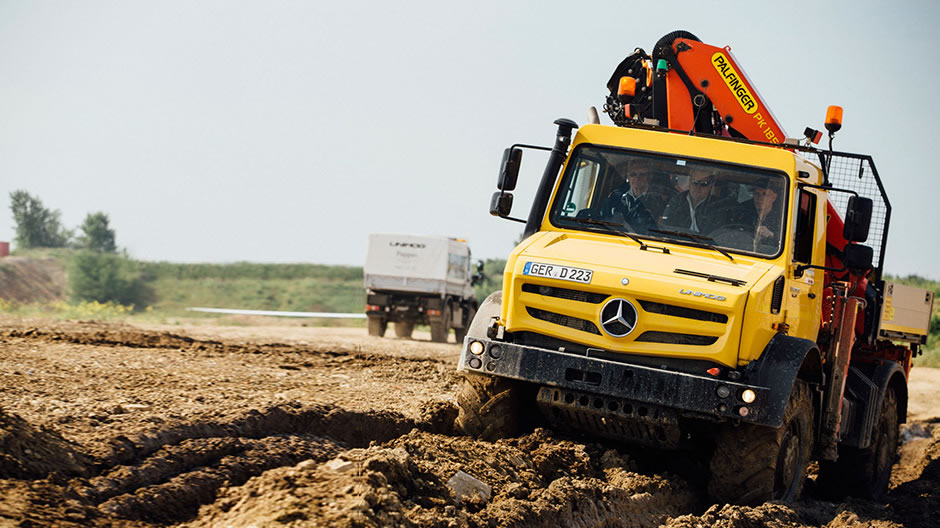
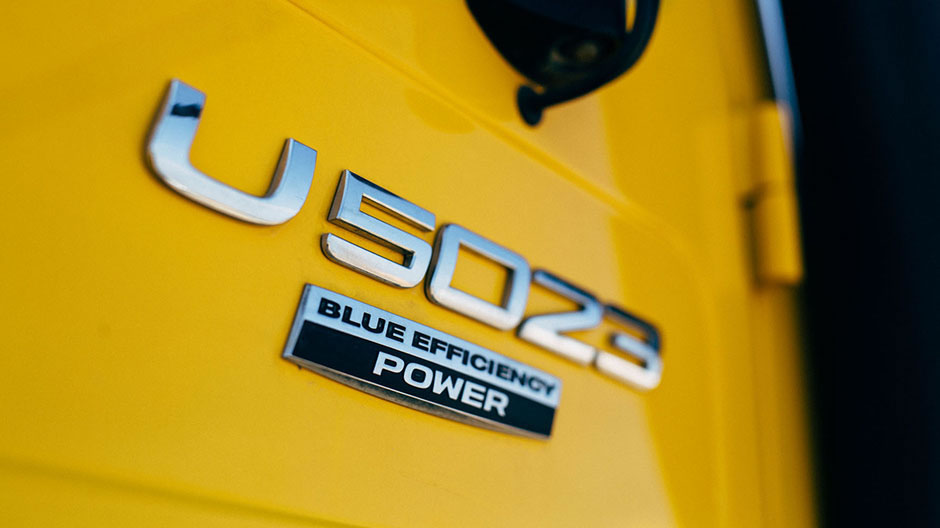
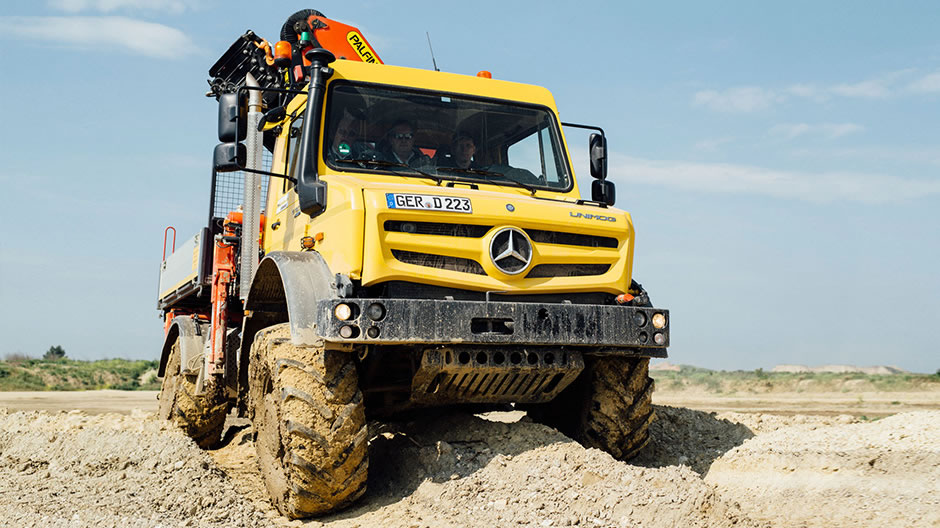

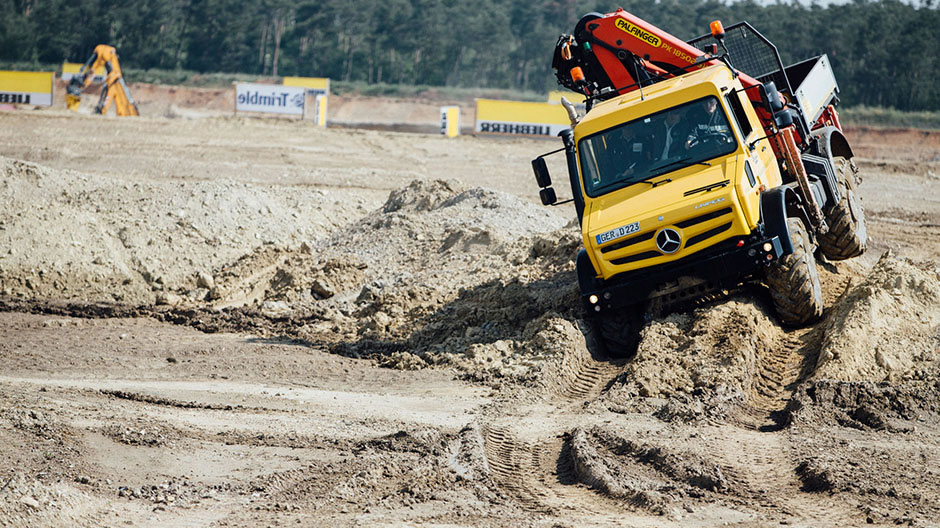
Another plus point for the vehicles is the large number of individual body options, the long service intervals of up to 1400 operating hours, and the long life span of at least 25 years. At Hinterbrühl fire brigade, last year a Unimog was decommissioned after a proud 36 years in service, and replaced with a Mercedes-Benz Zetros.
"We're thoroughly satisfied with that too," says Franz Sittner emphatically. "As an equipment vehicle with a frame-mounted winch, high pressure fire extinguishing system, 35-kW installed generator and a lighting mast, the vehicle is ideal for our local conditions and operational requirements. The value for money is outstanding, and if there is an emergency we even take an inflatable dinghy with us that we can inflate in no time at all using the air compressor."
On the test circuit, chief fire officer Skraback is now approaching a steep downhill slope. Crack! The side shoring plate briefly scrapes the ground, making the vehicle wobble. But only briefly, then it regains its balance – a normal all-wheel truck would probably have tipped over. "That's just why we need vehicles like the Unimog," says sector fire inspector Sittner, who also used to be the commander of Hinterbrühl fire brigade, after a brief moment of fright. "We're not just a fair weather fire brigade, and we have to go out when others can do no more."
Photos: Matthias Heschl




Comment
Please log in to post a comment.
No comments yet